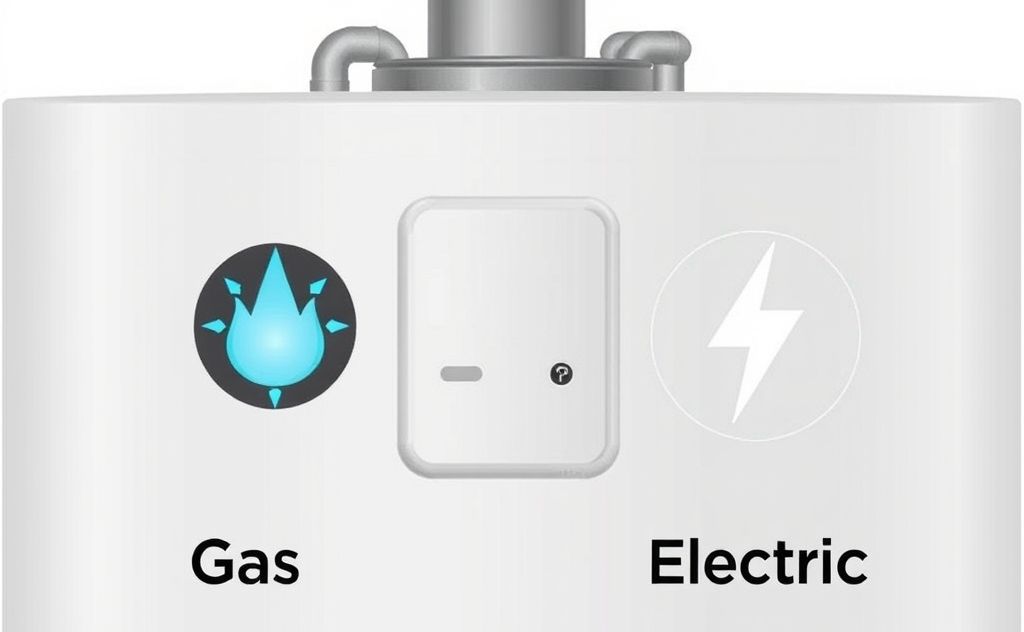To check if your water heater is gas or electric, locate the power source: if it has a vent pipe and a gas line, it’s gas; if it has a power cord and no venting, it’s electric.
Knowing whether your water heater runs on gas or electricity is crucial for maintenance, repairs, and energy efficiency. This guide will help you identify your water heater type quickly and accurately.

Visual Inspection: The Fastest Way to Identify
Start by examining your water heater’s exterior for these telltale signs:
Gas Water Heater Indicators
- Gas supply line – Look for a 1/2-inch diameter metal pipe entering the bottom of the unit
- Vent pipe – Gas models have a metal exhaust vent (usually 3-4 inches wide) at the top
- Burner access panel – Small removable panel near the bottom for burner maintenance
Electric Water Heater Indicators
- Power cable – Thick electrical wiring entering the top or side of the unit
- No vent pipe – Electric models don’t require exhaust venting
- Access panels – Typically two small panels (upper and lower) for element access

Check for a Pilot Light (Gas Only)
Gas water heaters maintain a small constant flame called a pilot light. To check:
- Locate the burner access panel at the bottom
- Remove the panel carefully
- Look for a small blue flame near the burner assembly
If you see this flame, you have a gas water heater. Learn more about how gas water heaters work in our detailed guide.
Listen for Operational Sounds
Your water heater makes distinct sounds when operating:
| Type | Common Sounds |
|---|---|
| Gas | Whooshing noise when burner ignites, occasional popping from sediment |
| Electric | Subtle humming from elements, occasional clicking from thermostat |
Check Your Utility Connections
Gas Line Identification
Follow the pipe from your water heater to see if it connects to:
- A main gas line with shutoff valve
- A propane tank (for rural homes)
Electrical Connection
Electric water heaters typically connect to:
- A dedicated 240-volt circuit
- A double-pole breaker in your electrical panel
Energy Source Verification
Still unsure? Try these methods:
1. Check Your Utility Bills
Compare your gas and electric usage when the heater runs. Spikes in gas usage indicate a gas heater.
2. Examine the Manufacturer Label
The label on the side will specify fuel type and other key details like water heater depreciation life.
3. Consult Your Home’s Blueprints
Original building plans often specify the water heater type.
Conversion Considerations
If you’re considering switching types, note that:
- Gas to electric conversion requires new wiring and circuit
- Electric to gas needs gas line installation and venting
- Both conversions may require permit and professional installation
For those considering tankless options, explore our guide on propane tankless water heaters.
Safety Precautions
When inspecting your water heater:
- Turn off power/gas supply before any close inspection
- Never attempt to modify gas lines yourself
- Wear protective gloves when touching pipes
- Have a fire extinguisher nearby when checking gas units
According to HomeServe, proper identification helps with maintenance and troubleshooting.
Professional Help
If you’re still uncertain, contact a licensed plumber or HVAC technician. They can:
- Confirm your water heater type
- Assess its condition
- Recommend upgrades or replacements
As noted by Crystal Heating and Cooling, understanding your water heater type is the first step in proper home maintenance.
